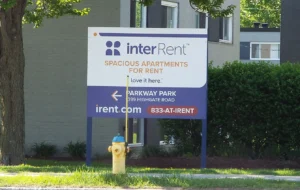Can HOAs Ban Homeowners From Having Section 8 Tenants?

Renters Rights
As if navigating the application process for Section 8 housing wasn’t difficult enough, now there are those hoping to keep such tenants out of decent homes. The Department of Housing and Urban Development recently charged a Texas HOA with discrimination after it banned Section 8 renters.
The property management company, FirstService Residential Texas, “discriminated because of race, color, sex, national origin, familial status, and disability in violation of the Fair Housing Act (“Act”) through the enactment of rental rules that prohibited, inter alia, homeowners from renting to tenants who receive assistance through the Housing Choice Voucher (“HCV”) Program,” according to court documents.
As for the Providence, TX-based HOA, it denied the charges, saying the rules it enacted “were intended to promote well-maintained homes, stabilize property values, and address community concerns regarding crime,” according to the filings.
The case is bringing national attention to the rights of renters under Section 8 and what HOAs can, or cannot, do when it comes to rental restrictions. Knowing who holds the power in these situations can help tenants make the right decisions moving forward.
What is Section 8?
The Housing Choice Section 8 voucher program is a federal government program “for assisting very low-income families, the elderly, and the disabled to afford decent, safe, and sanitary housing in the private market,” according to HUD.
Renters eligible for the program—which Congress authorized in 1974—can choose any housing and are “not limited to units located in subsidized housing projects.”
The states with the most Section 8 housing units include California, Texas, New York, Florida, and Illinois, according to Section 8 Solutions.
According to Jason Sorens, a senior research faculty member at the American Institute for Economic Research, the government created the program in the 1970s when it was “trying to get out of the business of directly providing housing.
“Instead, they would provide a voucher,” he says. Landlords are not required to accept housing voucher tenants under federal law. However, some states have banned “source of income discrimination,” effectively requiring landlords to accept Section 8.
“Texas isn’t one of them. Texas only has a law prohibiting homeowners associations from discriminating against Section 8 recipients,” Sorens adds.
Economists view housing choice vouchers as superior to public housing because the government “is not a very responsive or efficient landlord.” He also notes that public housing projects have tended to concentrate poverty, while Section 8 disperses it.
Other experts also noted that many landlords appreciate the program.
“It provides steady income, and most tenants, particularly elderly ones, are reliable and take good care of the property,” says Raul Gastesi, partner and co-founder of Gastesi Lopez & Mestre.
Free Rental Application
Get 20 Rental Forms for FREE, including a rental application.
How to qualify for Section 8 housing
Applicants must demonstrate financial need to qualify. Local public housing agencies (PHAs) determine eligibility based on income, family size, and citizenship status.
“In general, the family’s income may not exceed 50% of the median income for the county or metropolitan area in which the family chooses to live,” according to HUD.
If you’re eligible, you will be on a waiting list, but these can temporarily close because of a lack of available units.
“One problem is that the number of people who qualify often exceeds the number of available units,” says Gastesi. “There is a rental shortage in this country, particularly in places like South Florida. Some people stay on the Section 8 waiting list for years, and once they qualify, many remain on the program for life.”
What are the laws around HOAs and Section 8 tenants?
Section 8 laws vary by state. However, on a federal level, the “law does not require HOAs to notify homeowners of Section 8 housing recipients,” according to HOA Management.
On the other hand, the law does not require HOAs to accept Section 8 renters either.
“However, associations must tread cautiously, as they may face discrimination claims. Additionally, some state and local laws prohibit landlords from rejecting renters due to their Section 8 status,” HOA Management adds.
For instance, Texas enacted a law in 2023 that bans HOAs from “adopting rules restricting renters using housing aid,” according to Bloomberg. While the Providence, TX, HOA amended its rules at the time to comply with the new law, it also placed other restrictions, which boiled down to having the same effect on Section 8 renters.
Is Section 8 getting cut off?
In an executive order hours after his inauguration, President Donald Trump demanded that agencies deliver “emergency price relief.”
“This shall include pursuing appropriate actions to: lower the cost of housing and expand housing supply,” the order reads.
While few details are available about how this will be implemented, there is also talk about Section 8 being cut off or transformed. For one, the Heritage Foundation-led Project 2025—a roadmap intended to shape the administration’s first 100 days—calls for a “reset of HUD,” noting that the housing vouchers have downsides.
It further says these “must not come at the expense of local autonomy and the ability of cities, towns, neighborhoods, and communities to choose for themselves the sort of housing they want to allow.”
Several experts say that whether the Trump administration will do away with the Section 8 program or completely reorganize HUD is entirely up in the air.
“But I wouldn’t be completely surprised if the [new Department of Government Efficiency] team has it on their radar with changes coming down the road,” says Robert Washington, a broker with Savvy Buyers Realty.
However, the American Institute for Economic Research’s Sorens notes that these vouchers are authorized through the U.S. Housing Act. Unless courts dramatically reinterpret executive authority to withhold spending, the voucher program cannot be done away with by unilateral executive action, only by legislation, he says.
What is a fair market rent?
Fair market rents (FMRs) are part of Section 8.
These are based on the unit’s size and ZIP code and “are used to determine payment standard amounts for the Housing Choice Voucher program,” according to HUD.
For instance, in 2025, the FMR for a one-bedroom in Bridgeport, CT, is $1,572, while it’s $1,217 in Fresno, CA, according to HUD data.
“They are used as a guideline for how much tenants with a Section 8 voucher can pay in rent,” explains Washington. The rents listed on the HUD site are not always set in stone.
Furthermore, the final price is set during negotiations between the PHA and the landlord, according to the property management service Innago.
Of course, the owner will want to set a price higher than the FMR, while the PHA will try to get “as close to the FMR as possible,” so the final rent could be anywhere in between.
“Once a rent rate is finalized, the PHA will start issuing housing vouchers directly to the landlord,” according to Innago. “These vouchers cover approximately 70% of the finalized rent rate each month. The tenant is responsible for paying the remaining 30%.”
Source: Realtor.com













 Accessibility
Accessibility